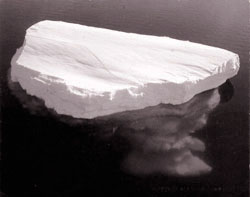The southern connection

scientists in Britain and Germany studying fossilised protozoans in the Southern Atlantic believe that ocean currents in Antarctica may have triggered regular growth spurts in Arctic ice sheets over the past 14,0000 years. This finding may lead to better predictions of the rate of global warming (New Scientist, Vol 154, No 2076).
Many researchers believe that major climate changes are triggered by events in the northern hemisphere alone. But in a study to be published in Paleoceanography , Mark Little and Dick Kroon of the University of Edinburg and their colleagues claim that, "climate is not made in the North Atlantic as so many authors suggest." Under consideration is the beginning of Heinrich events, regular surges and collapses of ice sheets that occur in the northern hemisphere every 8000 to 10000 years.During an event the ice sheets over North America, Greenland and Eurasia grow when the climate is cold and when the sheets are supplied with large amounts of moisture in the form of snow. But the ice sheets become unstable and collapse into the oceans, thus releasing vast flows of icebergs. These icebergs carry boulders that end up on the ocean bed.
But now Little and Kroon report that similar cycles of rapid climate changes have occurred in the southern Atlantic Ocean. The researchers found their evidence in rock cores taken from the seabed off the coast of Namibia. These cores show that at regular intervals, several polar species of protozoan known as planktonic Foraminifera suddenly appeared or disappeared. After radiocarbon dating the protozoans, the researchers say that there may have been dramatic swings in the southern climate every 8,000 to 10,000 years.
The researchers argue that the southern climate swings may coincide with changes in the strength of the Benguela current that brings cold deep Antarctic water north along the eastern shores of the southern Atlantic Ocean. This current grows strength of the trade winds close to the equator. When strong trade wind blow aside surface waters, the current strengthens as it wells up to the surface. Scientist believe that the periodic strengthening of the cold southern current, revealed by the protozoans, pushes so much water into the tropical Atlantic that it strengthens the Gulf stream in the northern Atlantic. This current then transports large amounts of warm water from the tropic northwards. There, the meeting of warm water and cold air generates large amounts of extra precipitation much to cause the rapid growth of the ice sheets.
Related Content
- Order of the National Green Tribunal regarding dumping of waste in a canal in Chennai, Tamil Nadu, 29/05/2025
- Order of the National Green Tribunal regarding discharge of untreated sewage water from a housing society, Ambattur, Chennai, 13/01/2025
- Order of the National Green Tribunal regarding pollution and encroachment of Yale Mallappa Shetty lake, Bengaluru, Karnataka, 21/02/2024
- Mobility and development, Spring 2023: innovations, policies, and practices
- Judgment of the National Green Tribunal regarding sewage management in Chennai, Tamil Nadu, 15/02/2023
- Report on proposed fishing jetty site at Alagankuppam village, Marakanam taluk of Villupuram district, Tamil Nadu, 02/08/2022
